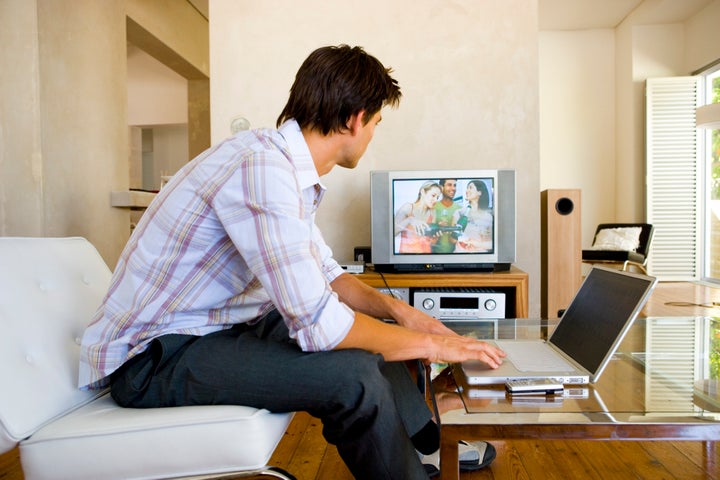
True confessions. A few days a week, I go to work in my pajamas. Being a member of the estimated 30 million U.S. workers who ply their trade from home at least once a week, I'm just not required to don my business casual clothing on a daily basis.
However, lately I've begun to consider that, despite the obvious comfort and convenience of flannel, my robe as business-wear might not be the best for my productivity.
Pondering my pj situation got me wondering about what other non-productive work-from-home habits other small business owners might be struggling with.
To find out, I queried and got responses from over 150 small business proprietors, including CPAs, consultants, Web workers, marketing experts, writers, artists and others. While there were dozens of issues brought up, there were a few that stood out. Here are the two most common work-from-home danger zones and some best practices for beating them back.
#1 Danger Zone: Getting distracted by personal items during work time.
Stopping cold in the middle of writing a critical client proposal to meet with the plumber; cleaning out the kitchen cabinets instead of making marketing calls; surfing the net for the newest smartphone apps rather than following up with potential clients. The natural distractions of personal items are all around us when we work at home. While it may not be possible to ignore every home issue that arises, setting clear boundaries around work time is essential to being productive.
Best Practice: Time blocking. The night before, or first thing in the morning, sit down and do an estimated time plan for the day. The time plan should include times to work on key projects and deliverables as well as client work, marketing and social media. If there are personal errands or tasks that need to be done that day, don't do them spontaneously. Instead, set aside a defined time window during the day to get them done. By creating a time plan, you're more likely to follow it and avoid getting taken off course by an unexpected interruption.
"I set some major time goals for how I want to divide up my workday," says Shel Horowitz, author of Guerrilla Marketing Goes Green. Horowitz says he tries to spend set amounts of time each day on billable client hours, writing, email, social media, exercise and office and personal tasks. "Tracking my time has forced me to be much more conscious of what I do all day. I've had to look at the reality that email was swallowing three to four hours a day. Since, I've unsubscribed from about 60 newsletters."
#2 Danger Zone: Rolling out of bed and going straight into the office. I realized that I, like many of my self-employed brethren, had slipped into the bad habit of waking up and going straight onto email, then stopping at some point and eating breakfast, then maybe exercising -- maybe not. Almost all the respondents pointed out that having an inconsistent morning routine and, yes, going to work in pj's, was ultimately bad for their small business.
Best Practice: Institute a morning routine that includes putting on pants or any piece of clothing you haven't slept in. More than 90 percent of the small business owners I surveyed for this post mentioned that putting on real clothes was important to feeling their most productive when working from home.
"The biggest problem with wearing pajamas while working from home is a psychological one," says Andrew Schrage, editor at Money Crashers. "Most people associate pajamas with relaxing, watching TV, and sleep. Thus, pajamas can act as a never-ending temptation to stop working and just relax, which is one of the biggest challenges of working from home."
Schrage says that on the flip side, wearing real clothes puts you in more of an active, working mindset for getting things done.
The other factor mentioned by almost every small business owner who responded was the importance of establishing a consistent morning routine.
"The flexibility of working from home can sometimes alter your sense of urgency to get up and going by 9 a.m.," says Jaclyn Mullen. "But the more organized and structured you start off, the more likely you are to complete your projects on time and without errors."
Try creating a regular routine that includes the time you will get up, the time you will be at your desk and what you plan to do in between (eat breakfast, exercise, shower) and follow it for a week. Make adjustments as needed, but commit yourself to a path of morning rituals that will set you up for the most productive day possible.
What are your work-from-home danger zones? We would love to hear your comments.
This article originally appeared at Xero.com, online accounting software for small business.
Karen Leland is a freelance journalist, best-selling author and president of Sterling Marketing Group where she helps businesses negotiate the wired world of today's media landscape -- social and otherwise. For questions or comments, please contact her at kleland@scgtraining.com.